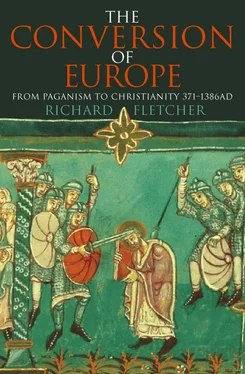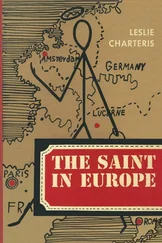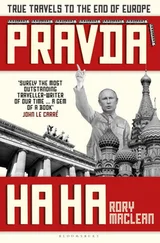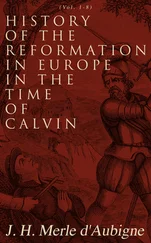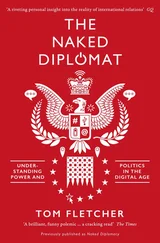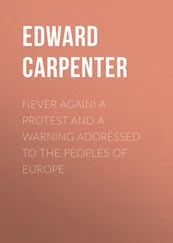How could a Christian ecclesiastical organization build its house upon such shifting sands? This was a question that had not arisen before. Within the Roman empire it had been normal for the church to graft itself on to the existing framework of civil administration. Thus, for example, the civil province of Gallia Narbonensis, administered from Narbo (Narbonne), turned into an ecclesiastical province: its chief bishop (or archbishop, or metropolitan) came to reside in Narbonne and his subject (or suffragan) bishops were those of the various towns within the civil province – Béziers, Carcassonne, Lodève, Nimes, Uzès, Toulouse and so forth. But in Ireland there were no towns, no provinces, no fixed boundaries. So what was to be done? One answer was to associate bishoprics with sites connected with particularly prominent dynasties which might be expected to show stamina and continuity. Armagh, for instance, was an early ecclesiastical foundation, whether correctly or not attributed to Patrick does not matter here; it is suggestively close to the secular stronghold of Emain Macha, ancient seat of Ulster kings. At Cashel in County Tipperary association is closer still; the cathedral stands right on top of the Rock of Cashel, seat of Munster kings.
Kinship and clientage, mentioned above as the cement of the tuatha , were the strongest social forces in early medieval Ireland. Patrick’s accommodation to one of these may perhaps be seen in his reference to ‘the sons of kings who travel with me’. Setting out the rights and obligations of kings, lords, kinsmen, the whole ordering (sometimes idealized) of a graded, complex, status-conscious society, was the responsibility of a class of specialists ( brithem , plural brithemin ) who memorized, pronounced and handed down the law. There were specialists in another branch of learning too, which cannot strictly be called literature because like the law it was orally transmitted: the bards ( fili , plural filid ) who recited poems, genealogies, stories, works such as the great Irish epic the Táin Bó Cuailnge (The Cattle Raid of Cooley). Together the lawyers and bards buttressed the sense of identity, the custom and morality of early Ireland. How were Christian identity, custom and morality to infuse themselves into so stout and immemorial a texture?
There was one distinctive Christian institution which proved itself brilliantly capable of meshing and marrying with Irish social habits: monasticism. Despite the references to monks in Patrick’s writings it is likely that the implanting of monasticism in Ireland on any serious scale was a development of that crucial but obscure sixth century. It is also likely that the monastic impulse, though it could have reached Ireland by more than one route, was felt particularly strongly from south Wales. One of the decrees of the ‘First Synod’ concerns British clergy who travel to Ireland. The south Welsh St Samson, whom we encountered in the last chapter, was a famous monastic founder and traveller. His earliest biographer shows him visiting Ireland and making monastic recruits there: though the passage is now thought to be a later interpolation into the text (above, p. 60) it may preserve a reliable tradition of a Hibernian visit by Samson.
We must remember that we are in an age when there were many shades of monasticism. A time would come when to be a monk meant to follow the monastic rule compiled by St Benedict of Nursia (d. c. 550). But the gradual coming to dominance of Benedict’s Rule in the western church at large was a very slow business, spread over several centuries. The late antique and early medieval periods were characterized by a ceaselessly proliferating diversity of rules. A monastic founder devised his own rule for his own monks to follow. Monasticism was therefore extraordinarily adaptable and transplantable, an institution with a marked degree of flexibility. In this respect it contrasted with the ‘Roman’ structure of organization in the secular church.
In Ireland monasticism made its appeal largely because it proved capable of accommodating itself to the structures of kinship and clientage. Ancient Irish law did not know of individual property. Land belonged to a family and could not be alienated. Founders and benefactors wishing to endow monastic houses with land could not do so by outright grants of absolute rights in perpetuity such as were known to Roman law. Instead, monasteries endowed with family land became family concerns, family possessions. The founder’s kin would supply the abbot and more than a few of the monks; the community would service the kin by praying for them, furnishing hospitality to them, leasing land to them on easy terms, looking after them in old age. A successful monastery could give birth to daughter houses or could acquire a following of houses which chose to opt for its customs and fellowship, just as a king acquired lordship over retainers or over other tuatha. In their physical appearance monasteries even looked like the fort-farms of the secular aristocracy with their dry-stone enclosing walls and their scatter of buildings within for human and animal inmates. 7 An exceptionally fine example, Inishmurray off the coast of Sligo, may be seen in plate 7.
These were not of course the only reasons why the Irish took to monasticism with such zest. The appeal of a life of ascetic self-denial was felt as strongly in Ireland as in other parts of Christendom. In an insecure and often violent world monastic communities were, or were intended to be, havens of security. They were rightly perceived as agents for the diffusion of Christianity in society. They were places where ‘sacred technology’ was practised, the crafts of writing and decorating books, of working in wood and stone and metal; places therefore where exchange could occur. In this respect the bigger monasteries came to be the closest thing to towns in early medieval Ireland.
There can be no doubting the fact that monasticism became enormously significant in Irish Christianity. Some historians have even gone so far as to claim that the Irish church became almost exclusively monastic in character. The argument is further advanced that branches of the Christian church in close proximity to Ireland, such as Wales, developed in the same manner; and that this distinctive model was exported to further neighbouring areas – from Wales to Brittany, from Ireland to western Scotland. Thus, the argument concludes, there came into existence a Celtic church which differed in its organization and customs from the Roman church.
It is now recognized that this is misleading. No church can be wholly monastic. The sacramental functions of a bishop (confirmation, ordination, consecration of churches, etc.) cannot be performed by an abbot, however holy and revered. The preponderance of writing generated in and for monasteries among the surviving written sources has given a biased impression of the standing of monasticism in Ireland. It is possible to detect – and some of the evidence has been glanced at above – the vitality of the secular, non-monastic church in the sixth and seventh centuries. There never was a ‘Celtic church’. Irish churchmen repeatedly and sincerely professed their Roman allegiances: and if there were divergent practices between Rome and Ireland, well, so there were between Rome and Constantinople – or Alexandria or Carthage or Milan or Toledo. The terms ‘Roman’ and ‘Celtic’ are too monolithic. In terms of custom and practice there were many churches in sixth- and seventh-century Europe, not One Church. Christendom was many-mansioned.
The sixth century saw the foundation of a number of communities which were to achieve great renown in the history of Irish spirituality and learning – Bangor, Clonard, Clonfert, Clonmacnois, Durrow, Kildare, Monasterboice, to name but a few. A feature of special significance for us is the appearance of monastic confederations spread over a wide area, chains of houses which owed their existence to a single founder and followed the rule drawn up by him. The founder best known to us is Columba (c. 520–597), who established three famous monasteries, at Derry, Durrow and Iona, and a number of lesser ones as well. A deservedly celebrated life of Columba was composed about ninety years after his death by Adomnán, ninth abbot of Iona and a member of the founder’s kin. It is to this wonderfully spirited and informative document that we owe most of what we know about Columba and the monastic regime which he favoured. 8
Читать дальше
